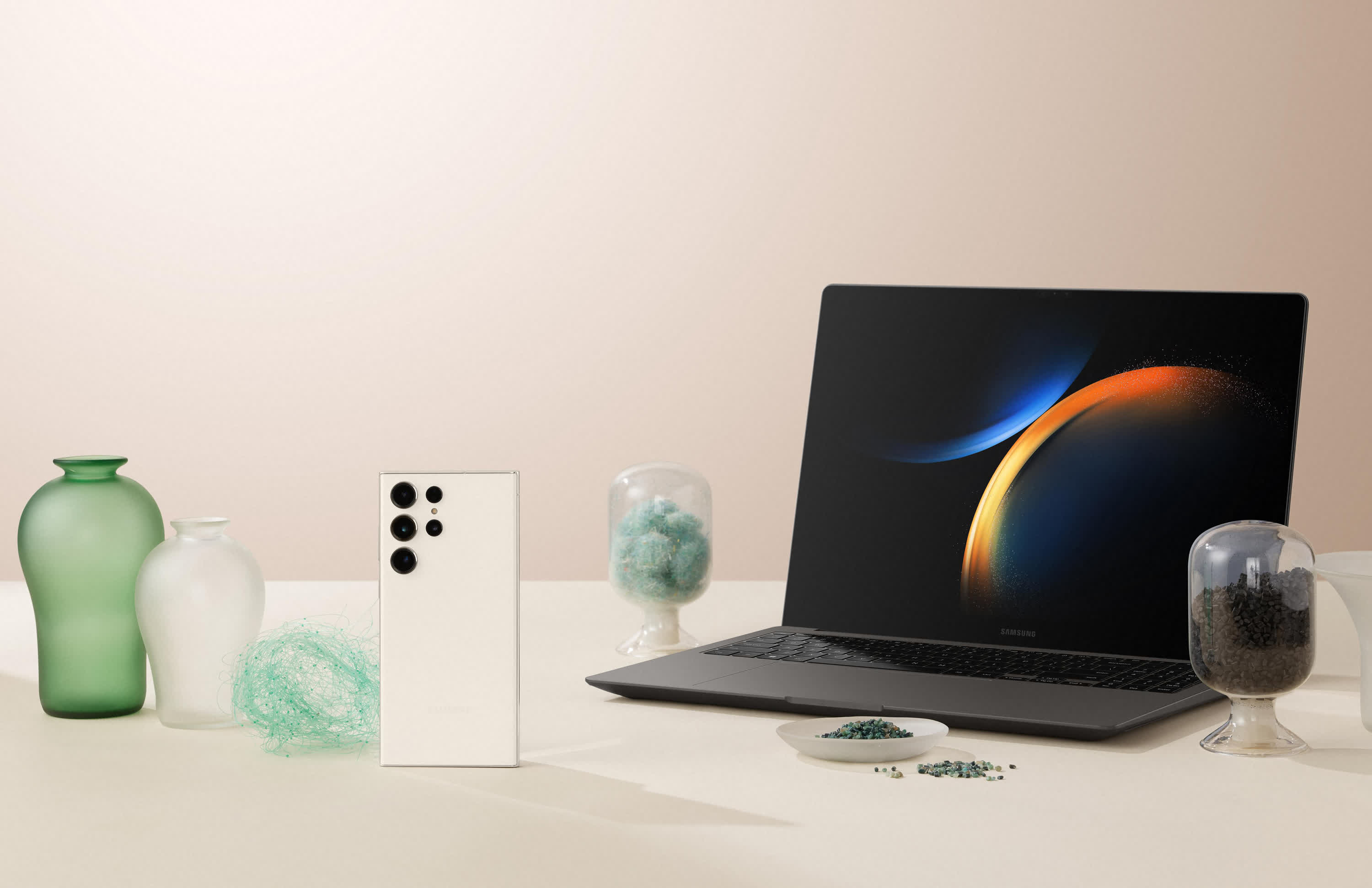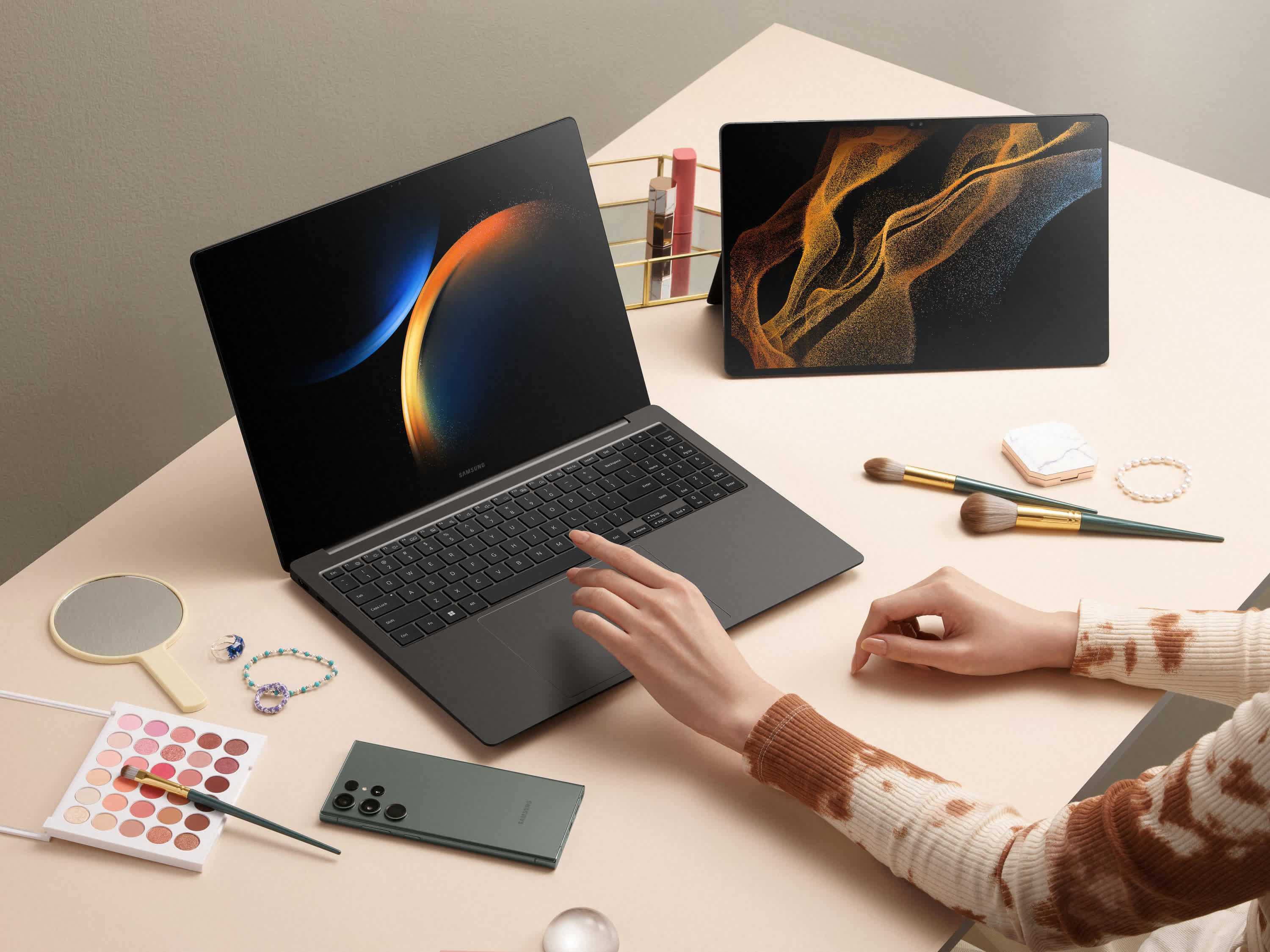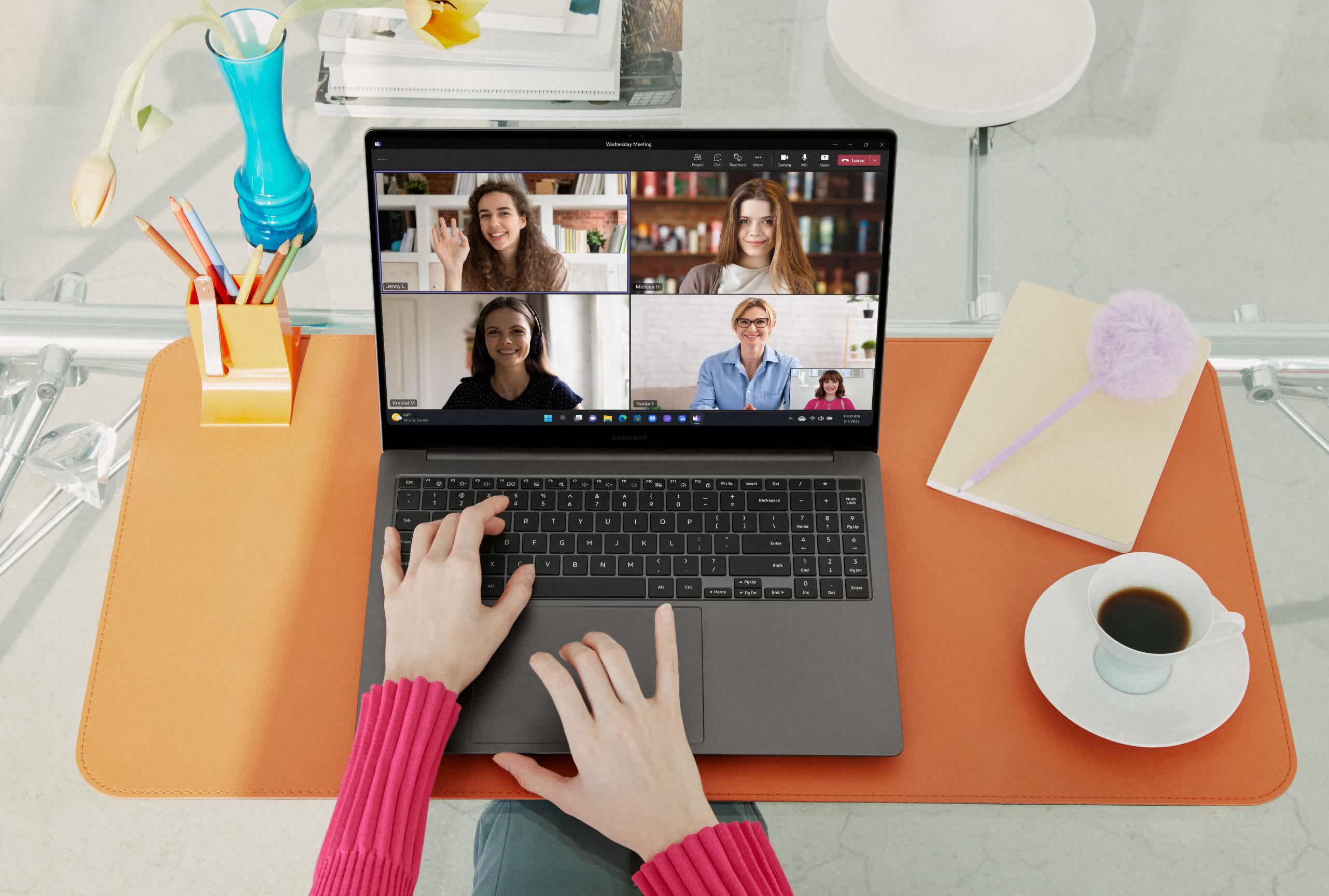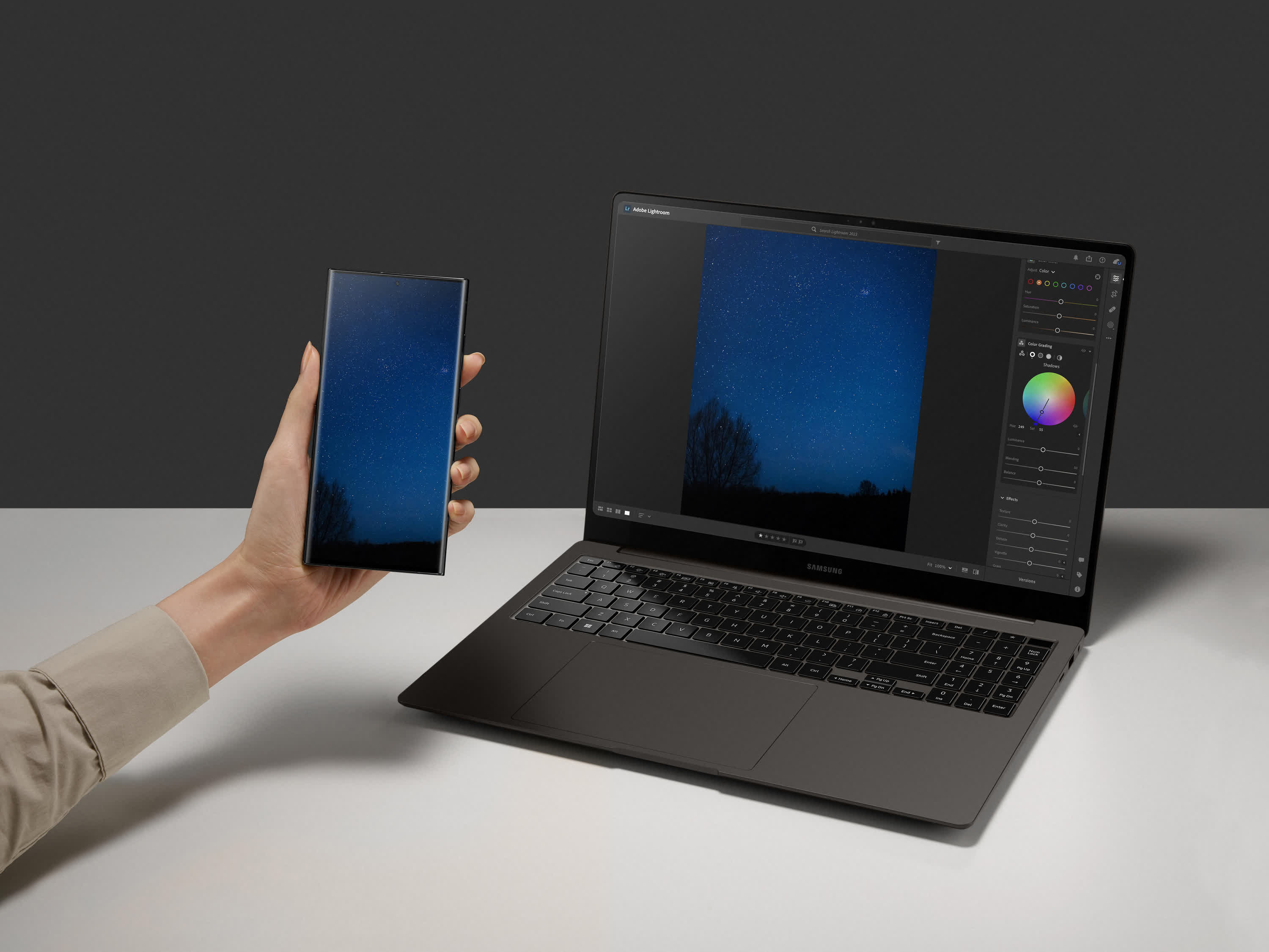What just happened? As expected, Samsung unveiled their latest Galaxy S23 smartphones at the Unpacked event in San Francisco this morning. What was more surprising, however, was that the company also showed off their new Galaxy notebook PCs at the same event, a sign that it wants to become a more serious player in the PC market.
As with many major tech vendors, Samsung has developed a regular cadence of updates for its major product lines. In a surprise to absolutely no one, the company unveiled their new Galaxy S23 smartphone series offering several nice incremental enhancements, a new 200 megapixel image sensor, a special speed-bumped version of the Snapdragon 8 Gen 2 SoC, a modestly refined design, and a few new colors.
Samsung was also ready to unveil their latest Galaxy notebook PCs. While the company has held events for its PC launches in the past, it's never chosen to include PCs in its high profile, mainstream phone launches. Between that philosophical choice as well as the increased focus that the company placed on software tools to ease the process of using your phone alongside your PC (and tablet), it's clear Samsung is making a more serious effort at becoming a bigger player in this market.
Given the widely acknowledged challenges the PC market is expected to face this year the timing is not ideal. Still, Samsung has been an intriguing, though little-known entrant to the PC space for some time now. If they continue to follow through on the statement they made at this Unpacked Event, they could end up becoming a serious PC competitor in the premium market.
The company showed off a complete set of offerings in its third-gen Galaxy Book line with a few interesting Samsung-specific twists. Leveraging 13th-gen Intel Core processors across the board, Samsung now has lightweight traditional clamshell notebook designs in 14" and 16" (the Galaxy Book3 Pro), 2-in-1 convertible designs (the Galaxy Book3 Pro 360), and an Nvidia GPU-enhanced Galaxy Book3 Ultra. All four designs include a Samsung 3K resolution (2,880 x 1,800) Dynamic AMOLED 2X display running at 120 Hz that offers a very impressive color range and extremely low blue light levels, making the screens very easy on the eyes.
This display technology made its first appearance in Galaxy phones, so it's a good example of the kind of technology transfer between products that Samsung is uniquely able to do. Along the same lines, the company is using a version of the vapor chamber cooling technology from last year's S22 smartphone in its latest PC designs.
Moving forward, I'd also like to see Samsung do things like integrate the selfie camera from its phones into PCs, as well as make an integrated 5G modem standard across all models. Some models of the Galaxy Book3 Pro 360 will apparently have optional sub-6 capable 5G modems in certain markets, but that configuration unfortunately won't be available in the US. These are the kinds of changes that I believe potential customers would expect from Samsung. In addition, they could make the hardware designs stand out from the crowd. Still, it's good to see them start to take steps in the direction of leveraging their mobile technology DNA into PC designs.
In addition to hardware, Samsung emphasized some of its own software and joint efforts with Microsoft and Google to make the process of using Windows-based PCs and Android-based phones together easier and faster.
Windows Phone Link continues to be preinstalled on all new Galaxy phones and the latest version adds a few new features, notably the ability to automatically turn on your Galaxy phone's mobile hotspot when a Galaxy Book3 is nearby. While this Instant Hotspot feature doesn't replace built-in 5G for a PC, it should work well in many situations. Samsung also discussed the ability to share open browser tabs from your Galaxy Phone to a PC, but it's unfortunately limited to working only with Samsung's own little used Internet browser on the phone.
Samsung demonstrated how their Multi Control and Second Screen features now let you use your Galaxy Book3 Pro's keyboard and mouse on nearby Galaxy phones and tablets and let you extend your PC screen wirelessly onto Android-based Galaxy tablets. Admittedly, they're probably not functions you're going to use all the time, but they are the type of handy little conveniences that can help bridge the usability gap between devices.
Finally, the company also debuted a new Expert Raw photo utility for the Galaxy S23 and other recent Galaxy phones that works in conjunction with the company's Quick Share utility on PC for easily transferring high-quality raw photos from the phone for editing in applications like Adobe Lightroom.
With prices starting at $1,249 for the 14" Core i7-equipped Galaxy Book3 Pro to $2,199 for the 16" Core i9 CPU and GeForce RTX 4070 GPU-equipped Galaxy Book3 Ultra, Samsung isn't going for the mainstream PC market with its latest offerings. These are premium devices with sleek, premium designs and high-end components.
For buyers seeking these kinds of machines, the Galaxy Book3 line presents an intriguing new option. More importantly, it seems to represent the start of a more serious effort to break into the PC market and that's something that's going to be interesting to watch.
Bob O'Donnell is the founder and chief analyst of TECHnalysis Research, LLC a technology consulting firm that provides strategic consulting and market research services to the technology industry and professional financial community. You can follow him on Twitter @bobodtech.



